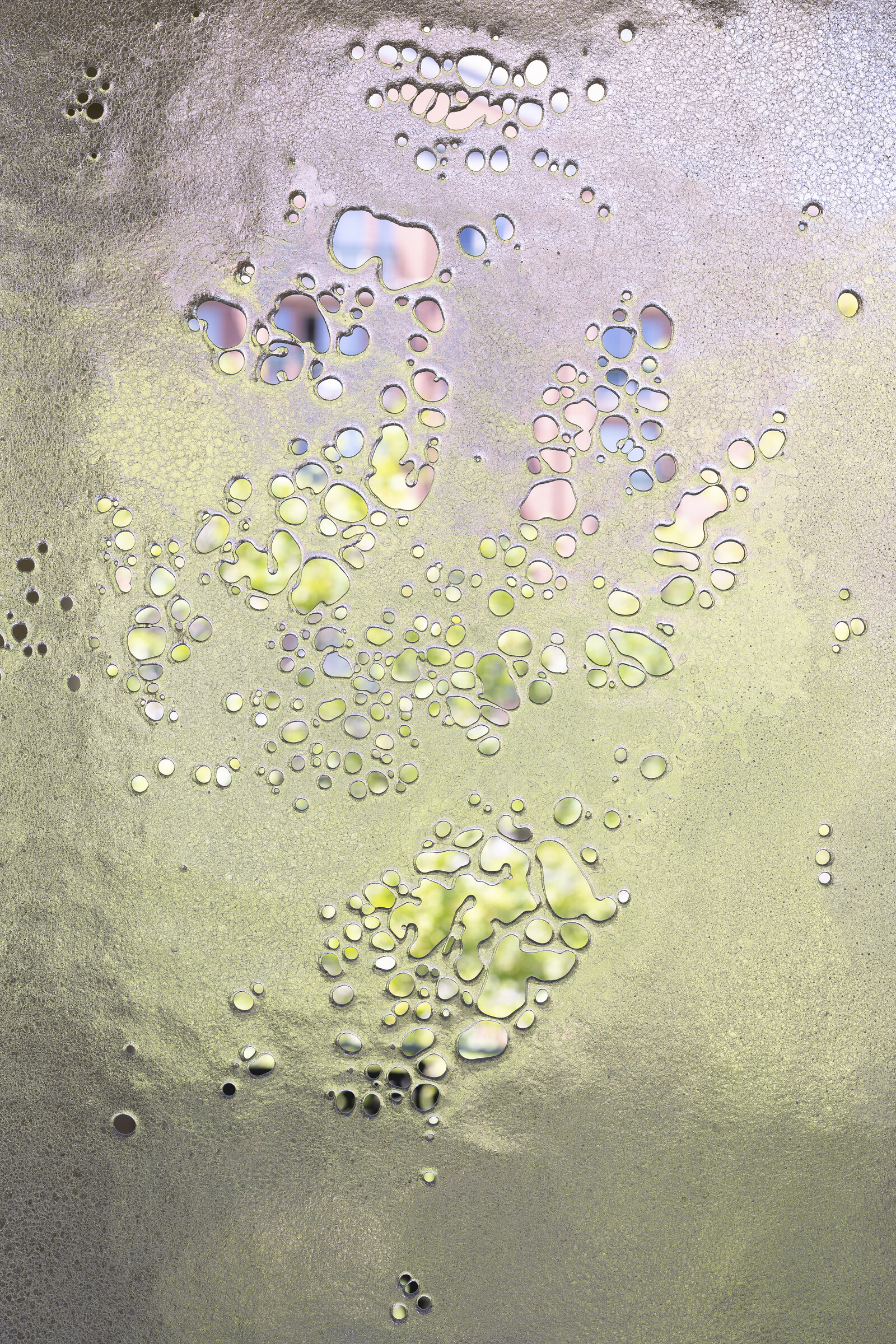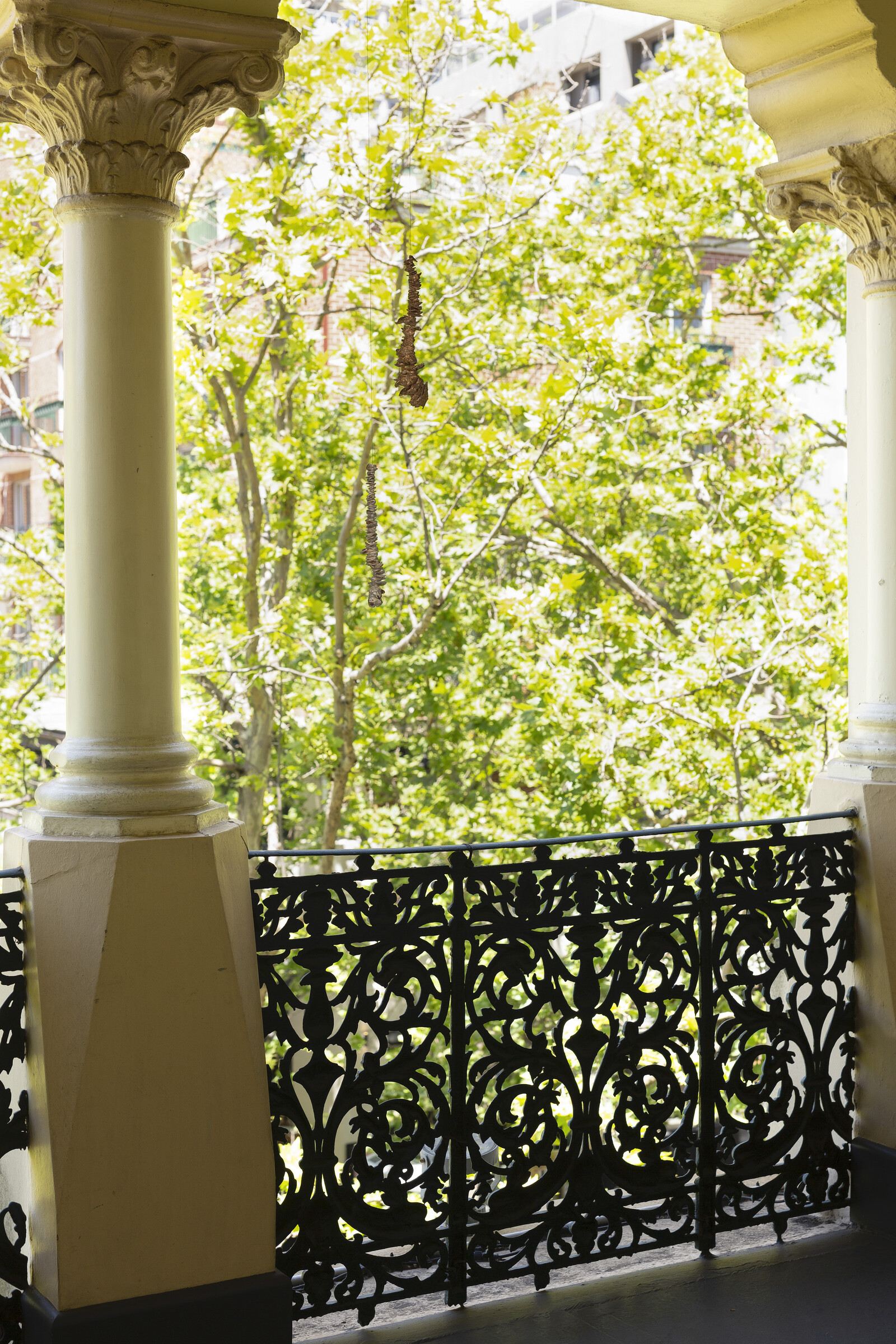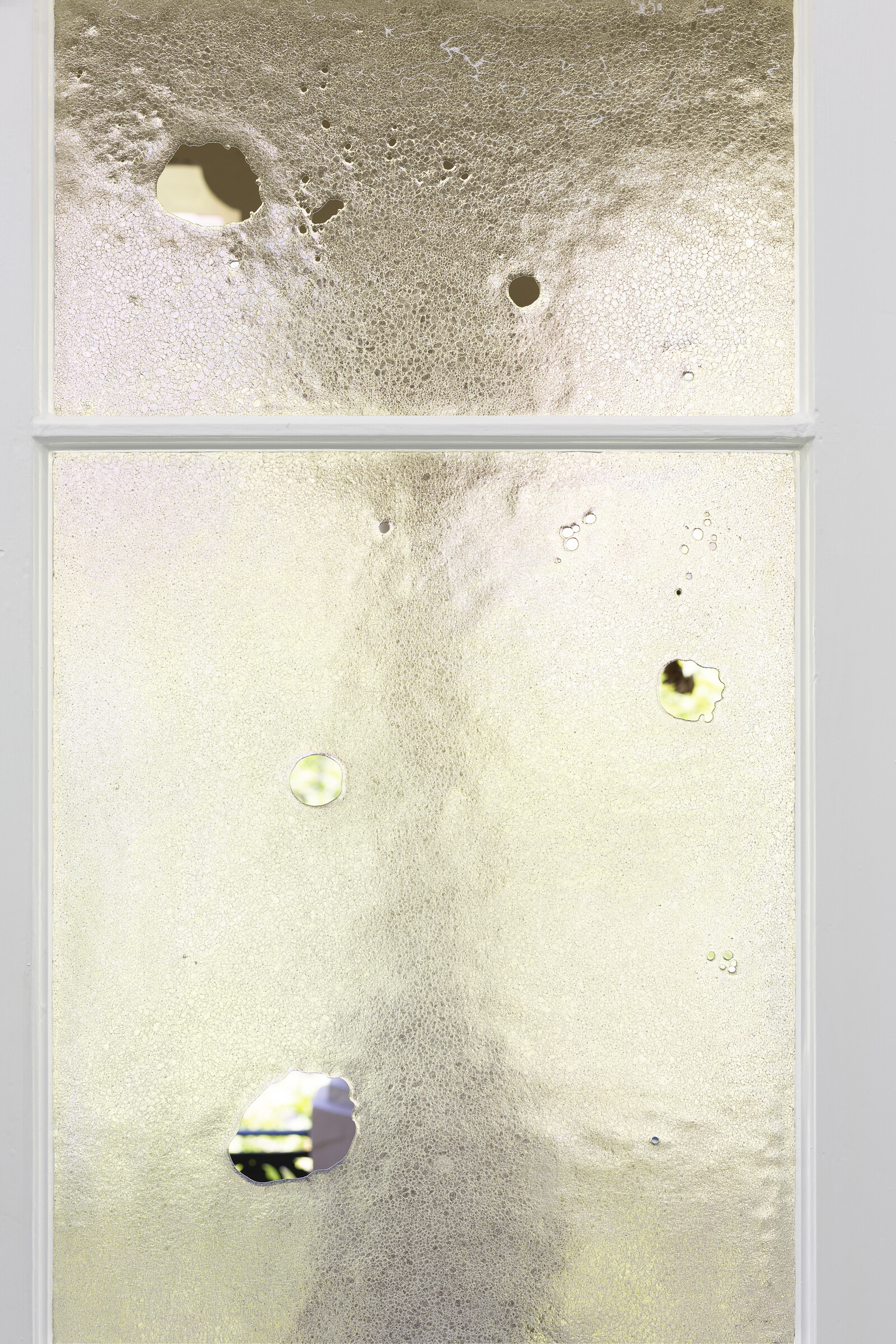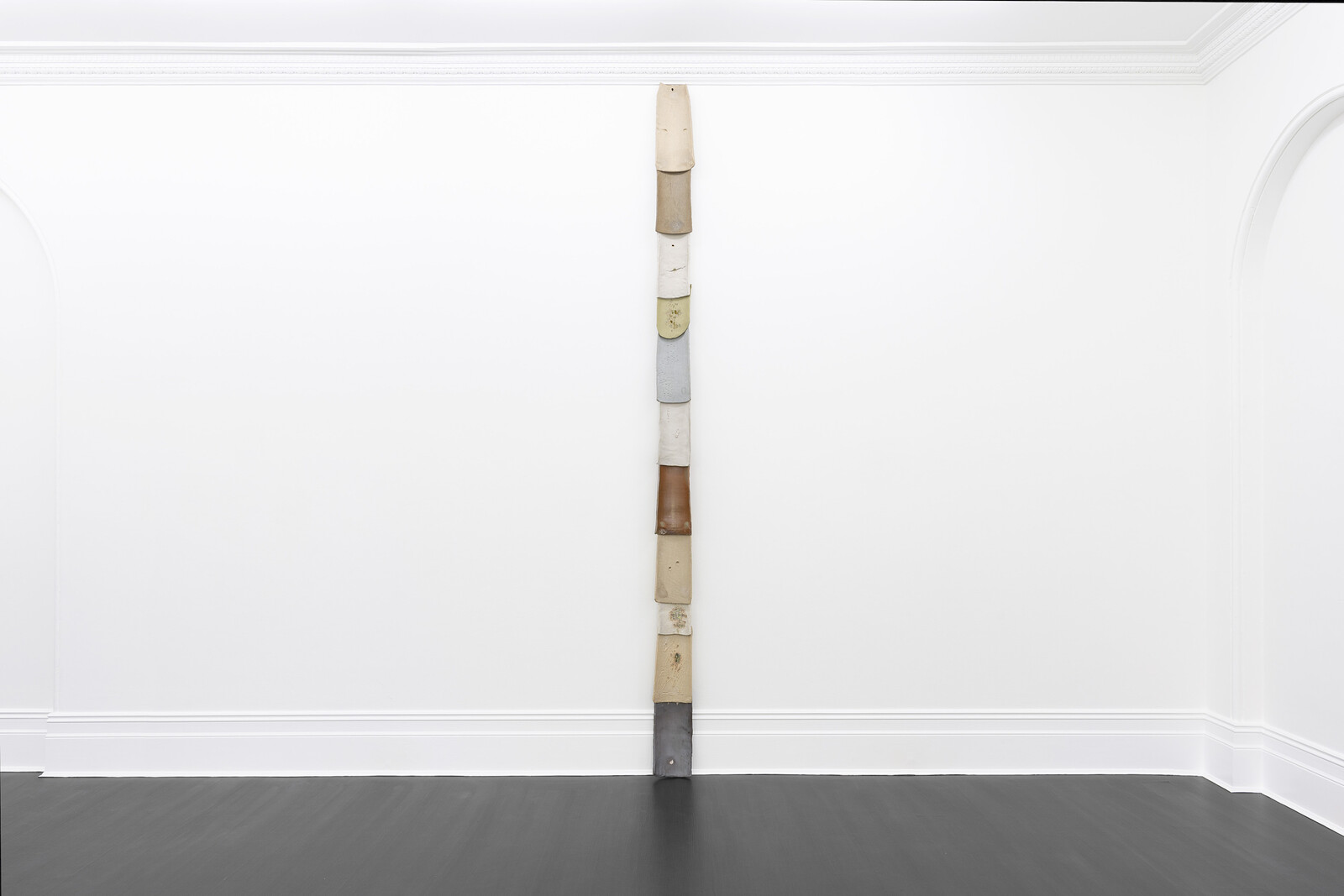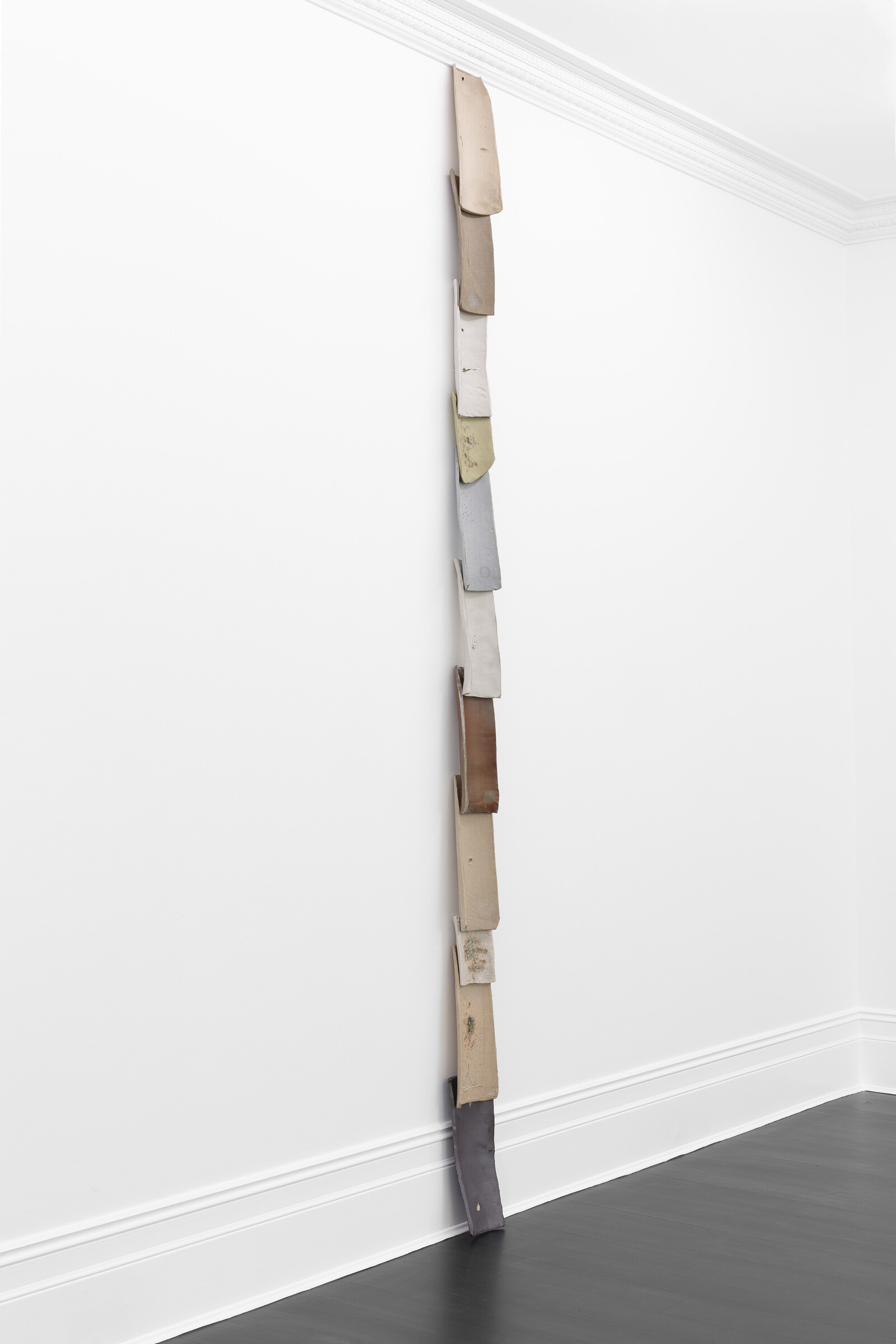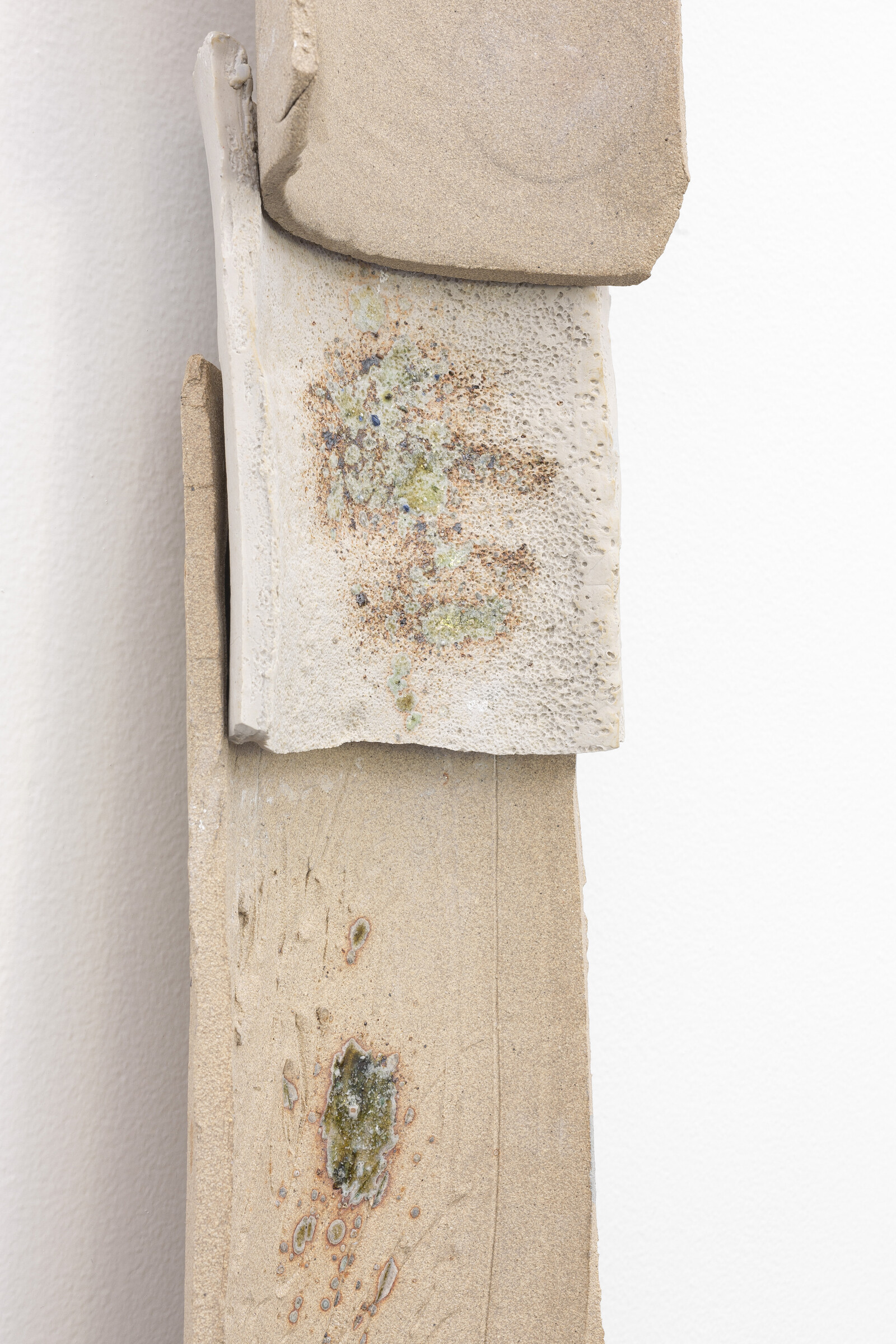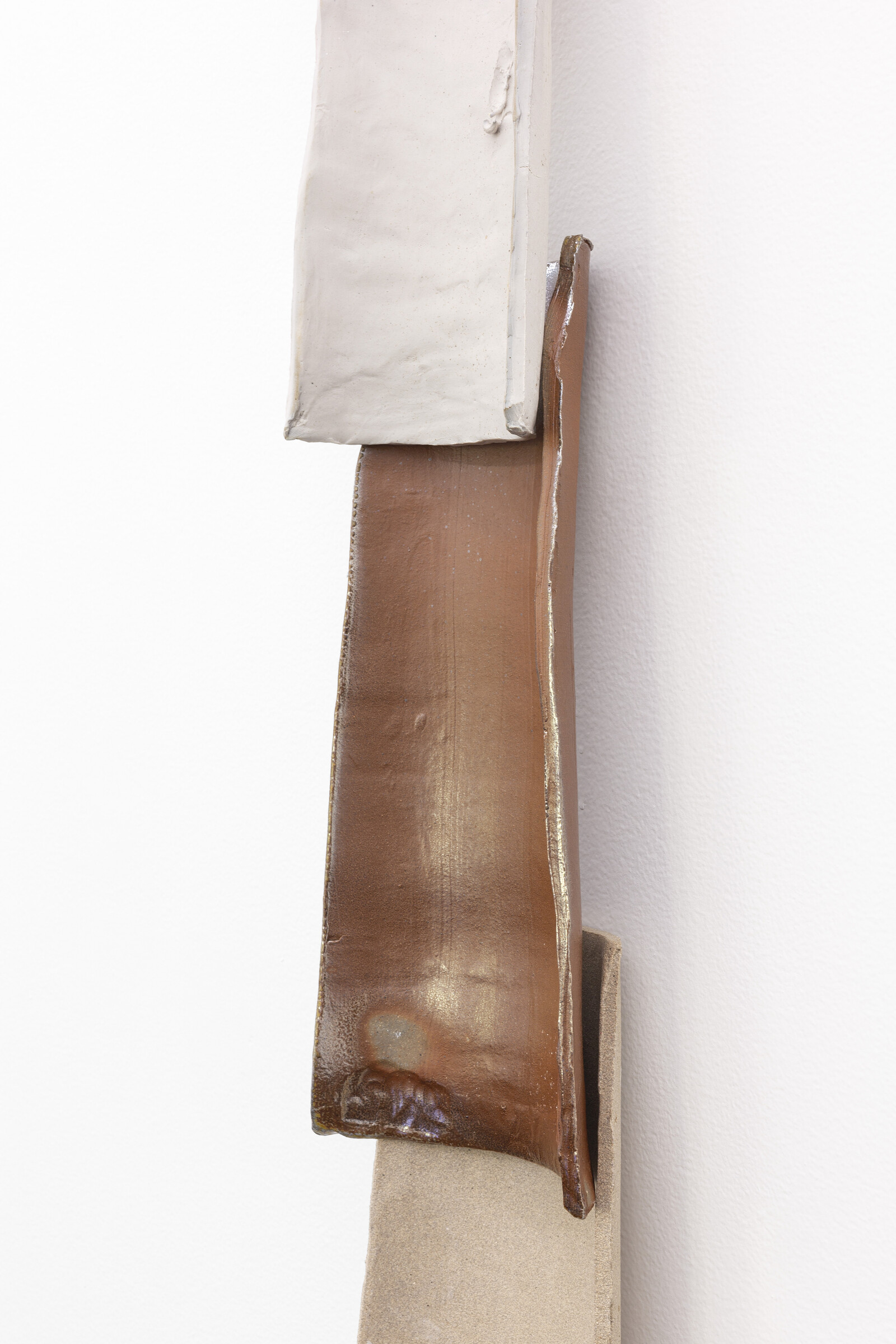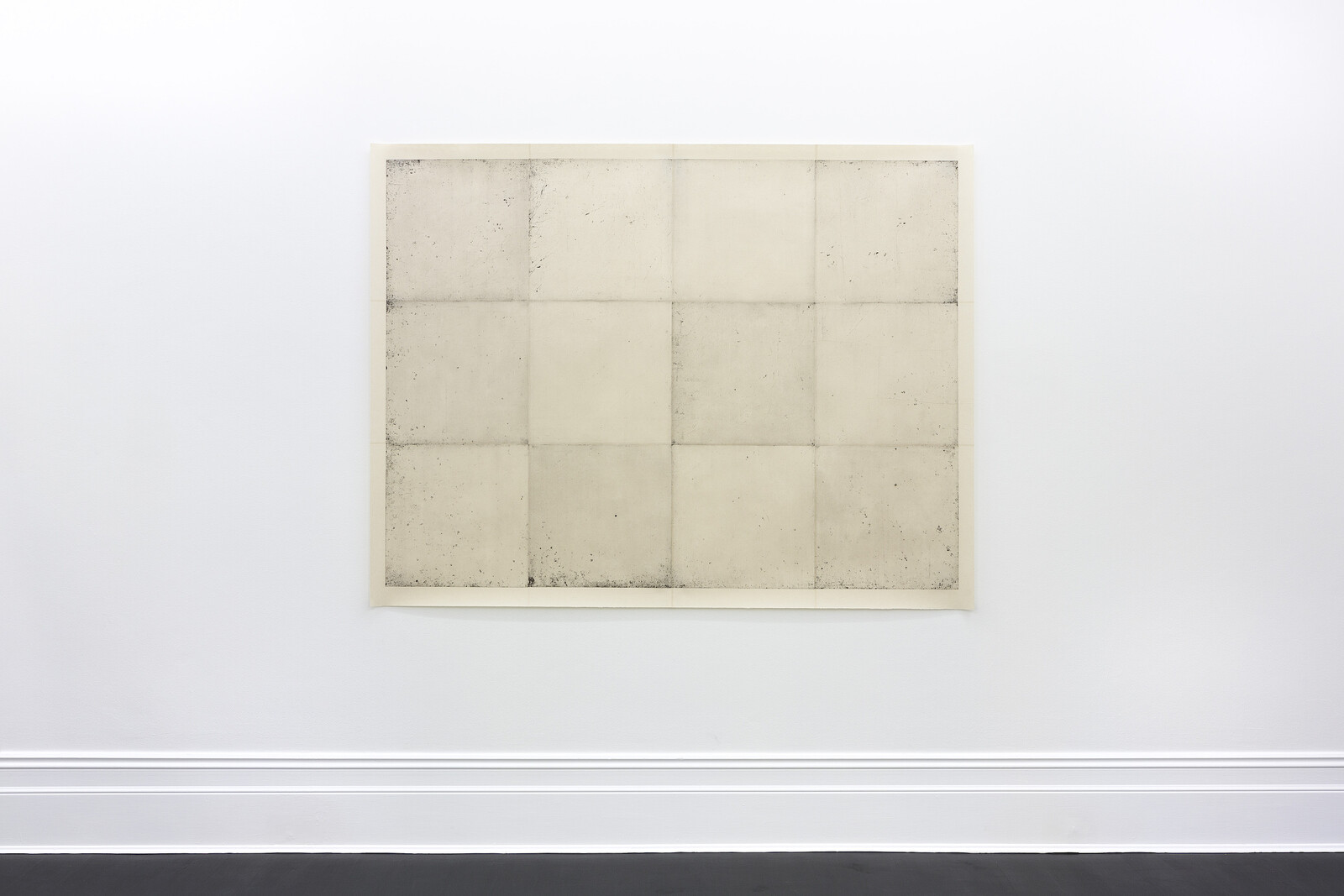Kate Newby’s sculptures, which can take the form of wind chimes, rocks, puddles, tiles, shells, bricks, and textiles, emerge from observations of her everyday surroundings. For her 2018 installation at Kunsthalle Wien, I can’t nail the days down, Newby covered the gallery’s floor with bricks embedded with coins, bottle caps, glass, and branches collected from the surrounding area. In her recent yearlong project A puzzling light and moving. (2019) at the lumber room in Portland, Oregon, she produced a range of site-responsive works, such as a puddle embedded in a concrete patio that reflected the outside environment. For her current exhibition at Fine Arts, Sydney, Newby uses clay, glass, bronze, and wire to craft an environment of mundane objects and subtle gestures that refine viewers’ perception of the gallery space to reveal a dialectical play of interior and exterior.
For Bring Everyone (2019), which lends the exhibition its title, Newby replaced several panes of glass in the balcony doors with handmade ones embedded with a number of holes. The crystalized pattern of the glass blurs the colors of the outside world, in contrast with the sharper, unfiltered images that can be observed through the holes. As well as allowing outside air to flow into the gallery, these holes offer views of two works hung from the roof of the gallery’s balcony. In Am I nuts or this is the happiest moments of my life? and We’ve all been hot and needed to cut off a pair of our own jeans (both 2018), shell-like pieces of silver and bronze are stacked in spine-like chains hung on lengths of wire. By placing these delicate sculptures on the other side of the closed but transparent doors, Newby draws attention to windows and balconies as transitional spaces.
Inside the gallery, on the wall opposite the balcony, is Best place to get the routine done (2019). A single, multicolored line of roof tiles stretching from floor to ceiling, it begins at the ceiling with a cream color similar to that of the building’s facade and ends with a graphite gray that matches the tone of the gallery floor. Each of the tiles is richly detailed, marked in several places by the artist’s fingers, and small puddles of found glass melted down during the firing of the tiles. From the distance, some of the splashes look like moss, but on closer inspection, viewers can see little bubbles that recall the texture of the glass panes on the balcony. Another work decorated with environmental traces is Wouldn’t that be enough (2019), a large, grid-shaped softground etching installed in the gallery’s office. Made with wax-coated copper plates that the artist exposed to the open air, the work is a document of erosion and the passage of time.
Newby’s titles are taken from poems by Frank O’Hara, James Schuyler, and other poets who muse on the quotidian, or from everyday words that she finds symbolic. The title of the exhibition, “Bring Everyone,” suggests a sense of community and gathering, as well as bringing the outside inward by opening interior spaces to the outdoors. As Gaston Bachelard argued, the dialectics of inside and outside are related not only the closed and the open, but with being and not-being: they are “always waiting to be reversed, to exchange their hostility.”1 Interested in “being in the world” and “addressing the everyday,”2 Newby upsets the boundaries of space through her intimate gestures, and invites us to reconsider where the interior ends and the exterior begins.
Gaston Bachelard, The Poetics of Space (New York: Orion Press, 1964), 217.
Kate Newby, Casualness: it’s not about what it looks like it’s about what it does (PhD dissertation, University of Auckland, 2015).


